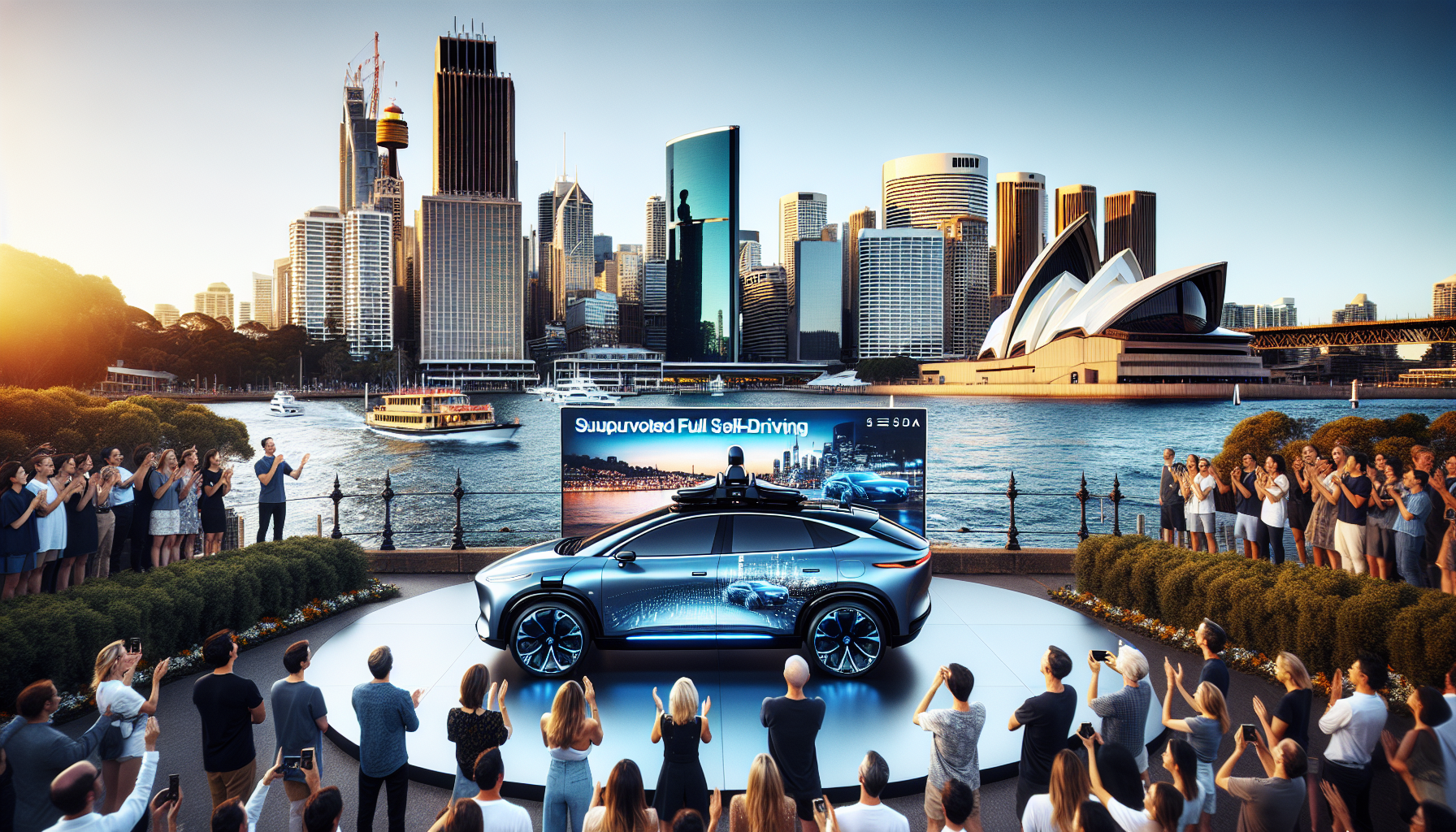Tesla Unveils Supervised FSD in Sydney: Software Set for Deployment!
We independently review everything we recommend. When you buy through our links, we may earn a commission which is paid directly to our Australia-based writers, editors, and support staff. Thank you for your support!
Quick Overview
- Tesla exhibits its Full Self-Driving (Supervised) functionality in Sydney.
- Video showcases the system’s ability to navigate complex city environments.
- FSD software suggests readiness for introduction in Australia.
- Potential to greatly diminish road accidents and fatalities.
- Current software update is not yet accessible to Australian users.
- Right-hand drive adjustment confirmed for Australian roadways.
Full Self-Driving Takes Over Sydney

Tesla has made considerable progress in enhancing its Full Self-Driving (FSD) technology, recently unveiling its capabilities within the dynamic urban landscape of Sydney, New South Wales. A newly shared video features a right-hand drive Model 3 smoothly navigating the city’s intricate traffic situations, including interactions with pedestrians, cyclists, and challenging intersections.
Technology Proves Adaptability Across Australian Cities
This demonstration is a continuation of a prior showcase in Melbourne, underscoring the versatility of Tesla’s FSD system in Australia’s major metropolitan areas. The footage, released by Tesla Australia & New Zealand on X, takes viewers on a 2.5-minute journey beginning in central Sydney, passing through iconic routes like the Harbour Bridge, and ending with an autonomous parking routine.
Software Progress and Owner Expectations
While the precise software version utilized for this demonstration remains unmentioned, Australian Tesla owners have begun receiving updates to version 2025.20.6.1. Although these updates frequently contain FSD code, it is still inactive for customer usage. The latest version, 2025.26, featuring FSD 12.6.4 and FSD 13.2.9, has not yet been rolled out in Australia, leaving many owners who have paid up to A$10,100 for FSD eagerly anticipating access.
Impact on Road Safety
The potential effect of FSD on road safety is significant. With road fatalities in Australia reaching 1,329 in the 12 months ending June 2025, FSD presents a hopeful solution to decrease accidents. Tesla’s autonomous technology has consistently shown safety benefits, with Q1 2025 statistics indicating one crash every 7.44 million miles for vehicles employing Autopilot, in contrast to the US average of one per 955,000 miles without such systems.
Technological Advantage Over Rivals
Tesla’s FSD technology distinguishes itself from competitors by employing an end-to-end neural network that continuously learns from data across the fleet. This strategy removes the necessity for expensive lidar or HD maps, instead relying on cameras and AI to replicate human intuition with impressive reliability. The recent demonstrations in right-hand drive areas reinforce the system’s compatibility and preparedness for Australian conditions.
Main Features Highlighted in the Sydney Demonstration
- Effortless Traffic Integration: Smoothly merges into urban traffic, managing lane changes and speed variations.
- Enhanced Pedestrian Recognition: Responds to pedestrians and cyclists in real-time, prioritizing safety.
- Complex Manoeuvre Management: Executes intersections and roundabouts with accuracy.
- Right-Hand Drive Adaptation: Displays flawless operation designed for Australian roads.
Conclusion
Tesla’s Full Self-Driving (Supervised) showcase in Sydney signifies a notable achievement in the prospective rollout of autonomous driving technology in Australia. With remarkable capabilities and the potential for improved road safety, anticipation for the official rollout is increasing among Tesla owners. As this technology progresses, it symbolizes a move towards safer, more effective urban transportation solutions.
